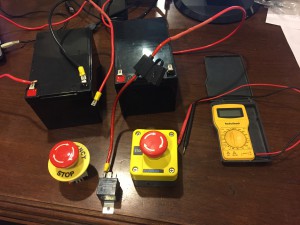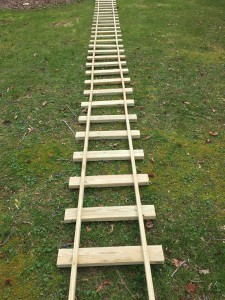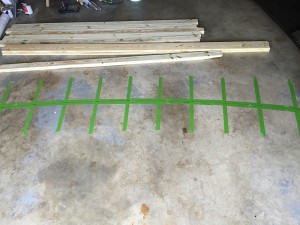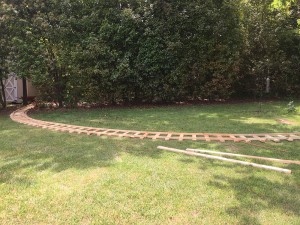
The kill button finally arrived from China via Amazon.com. It’s a big red button on a yellow faceplate that can mount against the firewall. In the meantime, a friend gave me a surplus Emergency Stop button that he had on hand.
The button my friend gave me is a surface mount instead of a flush mount. I’d rather have the flush mount in the cab so that it doesn’t intrude quite as much. Fortunately, the other button is a flush mount, so that’s the one that I’ll install in the firewall.
Since I now have two Emergency Stop buttons, I can wire them in series so that either button will interrupt the flow of power to the motors. I’ll put one in the cab for the operator, and the second “under the hood” next to the batteries. That way I can more conveniently disengage the circuit when charging the batteries.

Since both buttons are rated for only ten amps, and the circuit potentially can pull twenty-nine amps, I also installed a forty-amp relay. So the e-stop buttons control the relay, and not the actual circuit. The relay does the heavy lifting for handling the higher amperage.
Most relays that are readily available are for automotive use and are rated for twelve volts. My circuit has two twelve volt batteries in series, so will be pushing twenty-four volts. I wasn’t sure that I could tap into just twelve of the twenty-four volts to power my relay (turns out that I can, I now know), and didn’t know what problems I might have if I tried to power a twelve volt relay with twenty-four volts. But I was able to find a relay that’s rated for twenty-four volts, so it wasn’t an issue.
Or at least, that’s what I assumed. It turns out that, when I was testing the circuit with just one battery installed (running twelve volts), there wasn’t enough juice to power the relay. So I couldn’t even get the circuit to close with just twelve volts. So now I have to run the circuit at the full twenty-four volts, or not at all.

Here’s what the wiring looks like with the E-Stop buttons installed. Notice bundle of wires that are routed up the firewall so they can sit inside the steel drum. I’ll eventually drill the hole to mount the button through the firewall, once I get the firewall controls laid out, and attach the relay to the firewall so it doesn’t hang down.











